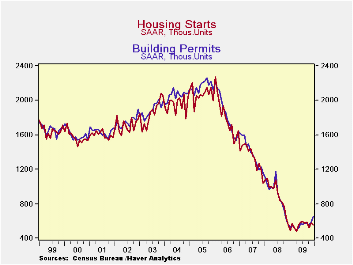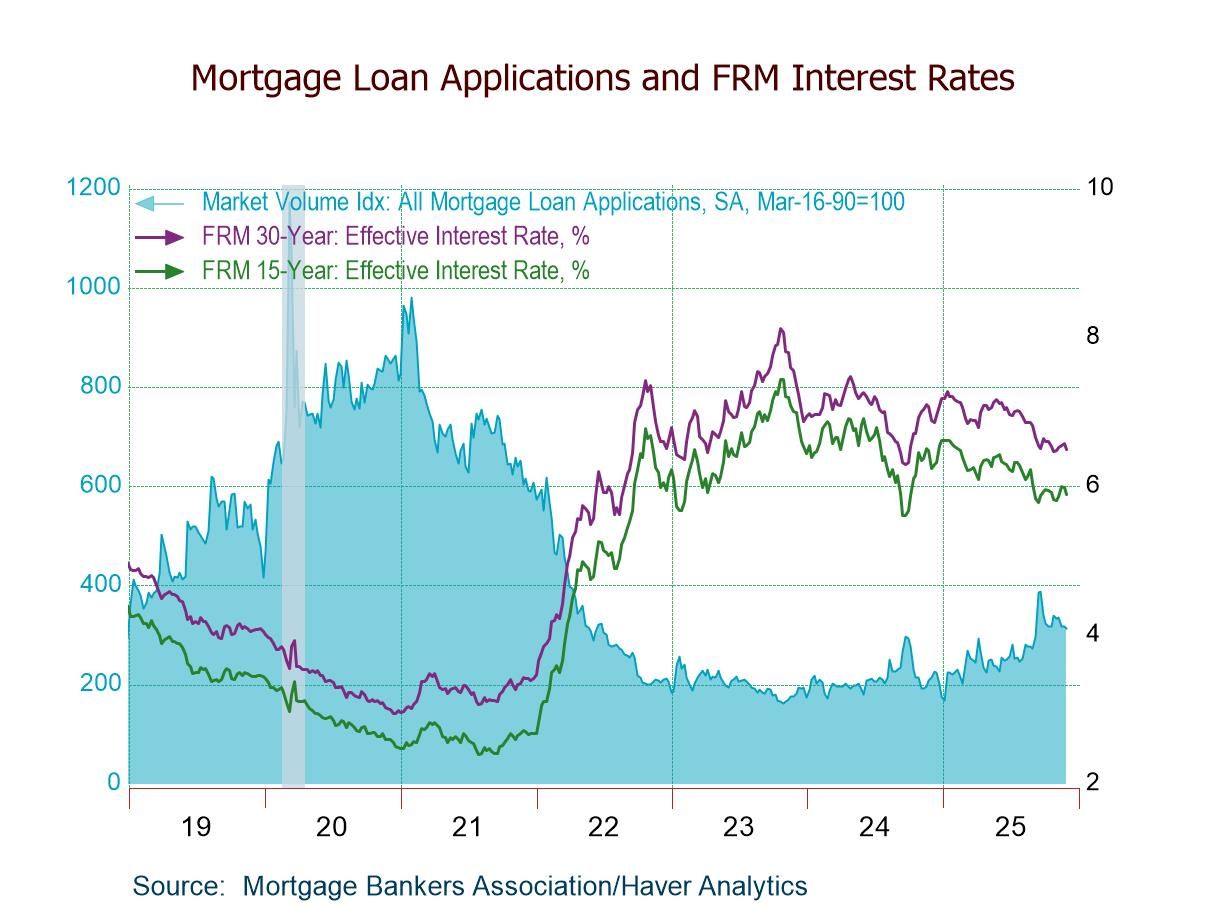 Global| Jan 20 2010
Global| Jan 20 2010Housing Starts Unwound
Summary
Housing starts unwound in December falling by 4% on the month. Still, the drop leaves starts in a more less stabilized environment, bumping along at one of their lowest levels of the cycle. Single unit 2-4 unit and 5-unit starts are [...]

Housing starts unwound in December falling by 4% on the month. Still, the drop leaves starts in a more less stabilized environment, bumping along at one of their lowest levels of the cycle. Single unit 2-4 unit and 5-unit starts are all down by some 75% to 89% from their max readings of the cycle. At the same time they are up 27% to 125% from their respective cycle lows (with the small 2-4 unit category responsible for the strong-seeming end of the range). Starts are lower across these groupings over most horizons from 3-months to 6-months to 12-months.
Starts fell in December in three of four regions, the South being the exception. The West saw a relatively small drop of 0.9% in December while the Northeast saw starts drop by 19% and the Midwest by 18.5%. The clustering of weakness in the Northeast and Midwest suggests that weather played a role as snow storms swept though the country in December on a fairly intense basis.
By regions starts are off from their respective cycle peaks ranging from a low of 71% in the South to a high of 81% in the West. The weakness has been quite uniform across the country.
One encouraging factor is that permits rose in December and did so across all four regions. While starts fell by 4% nationwide, permits rose by 10.9%.
Housing affordability remained quite good despite some minor upticks in mortgage rates. Despite the winter weather the report continues to show signs of bottoming and promise of some rebound for the months ahead as permits show steady positive momentum across all key time horizons from three- months to six months to 12-months.
| Housing Starts/Permits By Region | ||||||||
|---|---|---|---|---|---|---|---|---|
| Housing Starts: Analytical Comparisons (Pct. Changes Not Compounded) | ||||||||
| Dec.2009 | ||||||||
| Northeast | Midwest | South | West | |||||
| In 000's of Units | Starts | Permits | Starts | Permits | Starts | Permits | Starts | Permits |
| This Month:Saar | 51 | 87 | 88 | 116 | 310 | 319 | 108 | 131 |
| Nov.2009 | 63 | 68 | 108 | 105 | 300 | 305 | 109 | 111 |
| Oct.2009 | 54 | 64 | 99 | 104 | 265 | 272 | 106 | 111 |
| 3-month avg. | 56 | 73 | 98 | 108 | 292 | 299 | 108 | 118 |
| 1-mo. hg. | -19.0% | 27.9% | -18.5% | 10.5% | 3.3% | 4.6% | -0.9% | 18.0% |
| 3-month hg | -22.7% | 35.9% | -15.4% | 17.2% | 4.0% | 9.2% | -8.5% | 9.2% |
| 6-month hg | -37.0% | 50.0% | -17.8% | 26.1% | 12.3% | 4.6% | -14.3% | 13.9% |
| yr/yr hg. | -19.0% | 45.0% | 15.8% | 36.5% | 9.5% | 5.6% | -19.4% | 12.0% |
| Drop from Max | -79.5% | -71.3% | -80.3% | -71.6% | -72.9% | -71.1% | -81.5% | -78.8% |
| From Cycle Low | 34.2% | 64.2% | 51.7% | 46.8% | 34.2% | 22.7% | 35.0% | 29.7% |
Robert Brusca
AuthorMore in Author Profile »Robert A. Brusca is Chief Economist of Fact and Opinion Economics, a consulting firm he founded in Manhattan. He has been an economist on Wall Street for over 25 years. He has visited central banking and large institutional clients in over 30 countries in his career as an economist. Mr. Brusca was a Divisional Research Chief at the Federal Reserve Bank of NY (Chief of the International Financial markets Division), a Fed Watcher at Irving Trust and Chief Economist at Nikko Securities International. He is widely quoted and appears in various media. Mr. Brusca holds an MA and Ph.D. in economics from Michigan State University and a BA in Economics from the University of Michigan. His research pursues his strong interests in non aligned policy economics as well as international economics. FAO Economics’ research targets investors to assist them in making better investment decisions in stocks, bonds and in a variety of international assets. The company does not manage money and has no conflicts in giving economic advice.






